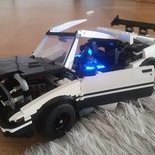
Brushless motors in the lego world - general topic
By
Krxlion, in LEGO Technic, Mindstorms, Model Team and Scale Modeling
-
Recently Browsing 0 members
No registered users viewing this page.

By
Krxlion, in LEGO Technic, Mindstorms, Model Team and Scale Modeling
No registered users viewing this page.